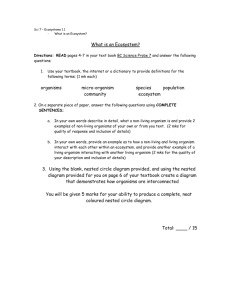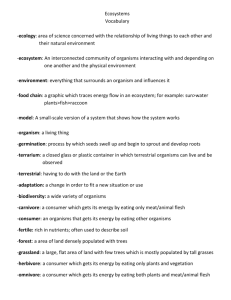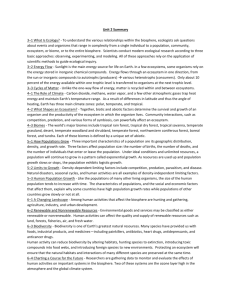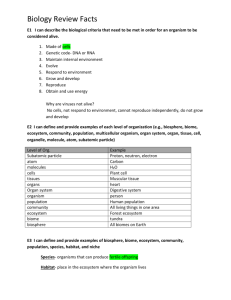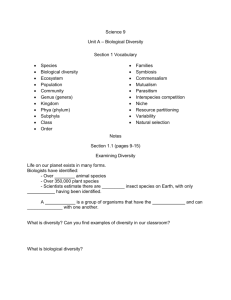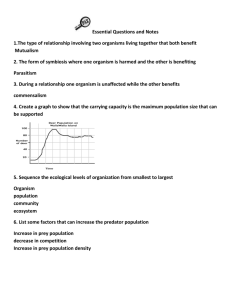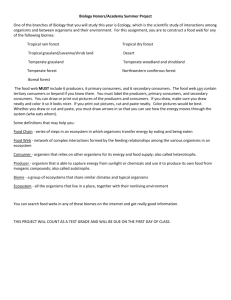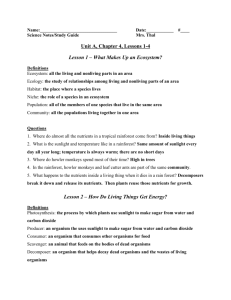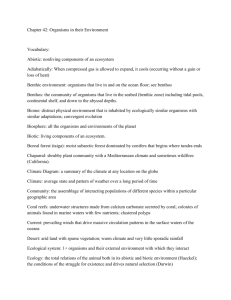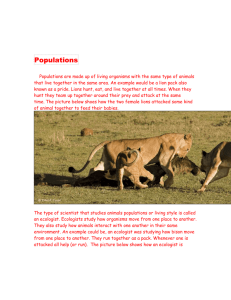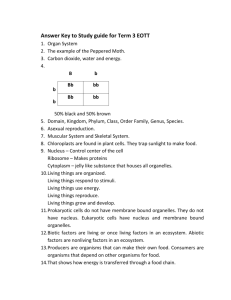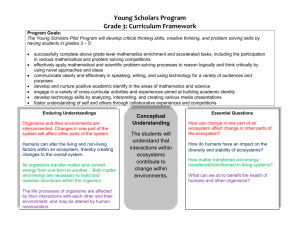10/28/15 Summary of Living Things Lesson All around the world
advertisement
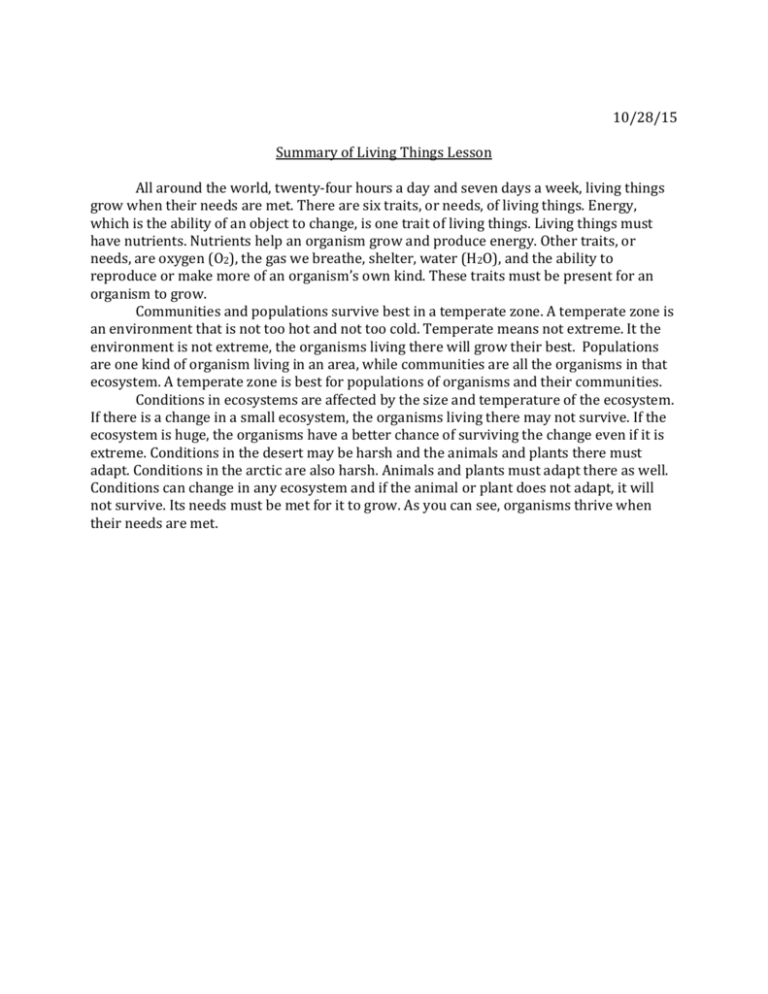
10/28/15 Summary of Living Things Lesson All around the world, twenty-four hours a day and seven days a week, living things grow when their needs are met. There are six traits, or needs, of living things. Energy, which is the ability of an object to change, is one trait of living things. Living things must have nutrients. Nutrients help an organism grow and produce energy. Other traits, or needs, are oxygen (O2), the gas we breathe, shelter, water (H2O), and the ability to reproduce or make more of an organism’s own kind. These traits must be present for an organism to grow. Communities and populations survive best in a temperate zone. A temperate zone is an environment that is not too hot and not too cold. Temperate means not extreme. It the environment is not extreme, the organisms living there will grow their best. Populations are one kind of organism living in an area, while communities are all the organisms in that ecosystem. A temperate zone is best for populations of organisms and their communities. Conditions in ecosystems are affected by the size and temperature of the ecosystem. If there is a change in a small ecosystem, the organisms living there may not survive. If the ecosystem is huge, the organisms have a better chance of surviving the change even if it is extreme. Conditions in the desert may be harsh and the animals and plants there must adapt. Conditions in the arctic are also harsh. Animals and plants must adapt there as well. Conditions can change in any ecosystem and if the animal or plant does not adapt, it will not survive. Its needs must be met for it to grow. As you can see, organisms thrive when their needs are met.



